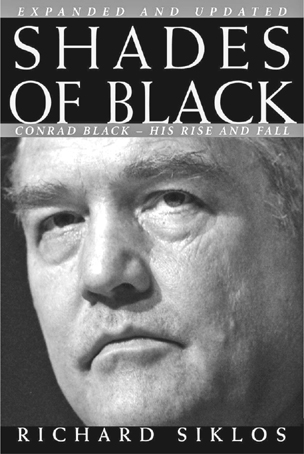
The Conrad Black “Industry”: I tried to reduce the number of books and articles about me by writing a book about myself in 1992, which was quite well-reviewed and sold well, to which this is a sequel. But it didn’t achieve its purposes. Several books and a TV movie came out as my legal problems burst. This threshold was not recrossed until years later.
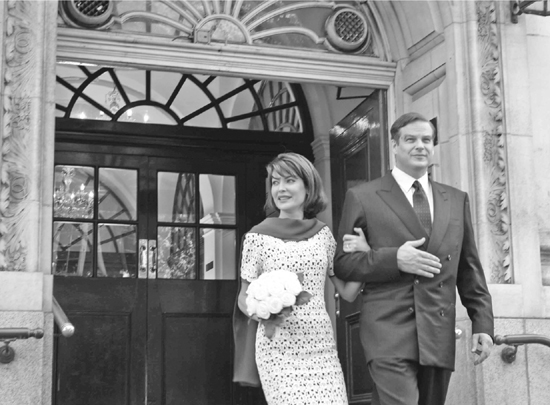
“Shades of Black: The Conrad Black Story,” which aired in 2006. Lara Flynn Boyle as Barbara. Albert Schultz as CB. (photo credit 2.2)
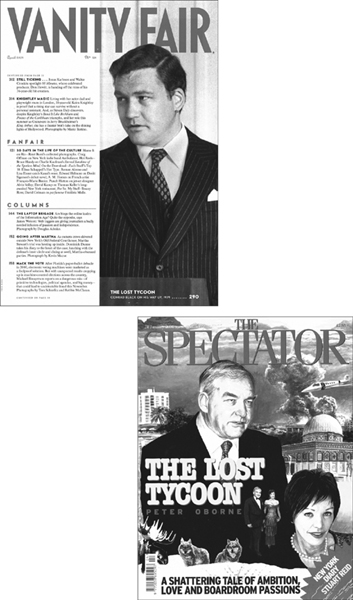
U.S. and U.K. press coverage, in 2004.

The front covers of Canada’s weekly newsmagazine, Maclean’s, over the years.
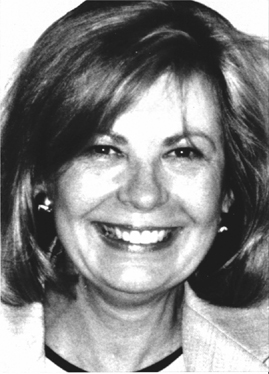
Rosemary Millar ran my London office from 1989 to 2004. She had a heavy cold at the time my legal problems broke, which shortly became pneumonia, and then was diagnosed as inoperable lung cancer. She paid for expensive treatment at the London Clinic with her Hollinger stock options, but died in 2004, aged only sixty-one. She was a wonderfully capable, dignified, and good-humoured person, and her death is one of the greatest sadnesses of this entire cataract of horrible events.
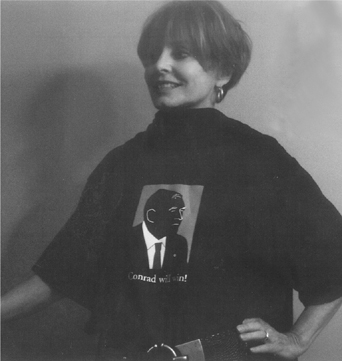
Joan Maida, my doughty and implacable and very nimble executive assistant in Toronto for twenty years. She is modelling a “Conrad Will Win” T-shirt, which, with other shirts of similar inspiration, were quite successful commercially. She has been invaluable, in good times and bad, and there has been much of both. She and Rosemary Millar got on perfectly, and I am deeply indebted to both of them.

An imaginative and slightly gruesome treatment of my travails by artist Michael Harris. (photo credit 2.8)

At home, in my library in Toronto, in 2005.
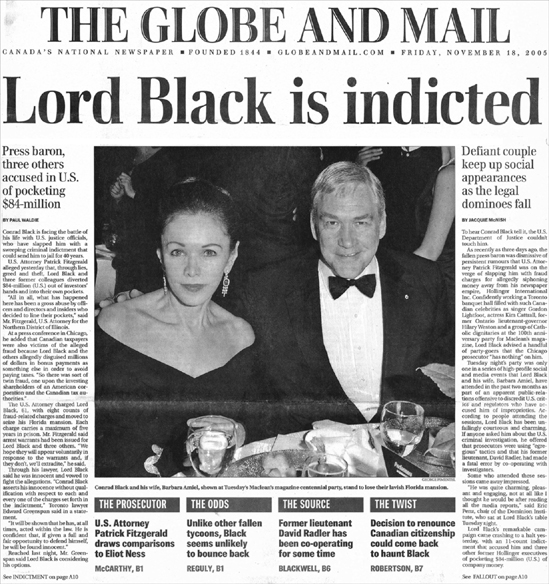
At the centenary celebrations for Maclean’s magazine in November 2005, when I knew the indictment was imminent. The $84 million referred to was down from the Special Committee’s fable of a “$500 million kleptocracy” and eventually trickled down to the unfounded claim that I had improperly received $285,000. (photo credit 2.9)

My chief counsel in Chicago, Edward Genson (left), one of Chicago’s best known criminal lawyers, and Edward L. Greenspan, probably Canada’s most famous barrister. They did a great deal of damage to government witnesses. (photo credit 2.10)

Miguel Estrada, engaged by Barbara after a meticulous canvass, as we prepared our last conventional throw with an appeal to the U.S. Supreme Court. It only accepts to hear about 1 per cent of the petitions it receives. A unanimous court rebuked the Circuit Court and vacated all counts, but remanded the counts back to the Circuit Court panel for reflection on its own errors. We were always uneasy about the result of such a self-evaluation by Richard Posner. (photo credit 2.11)
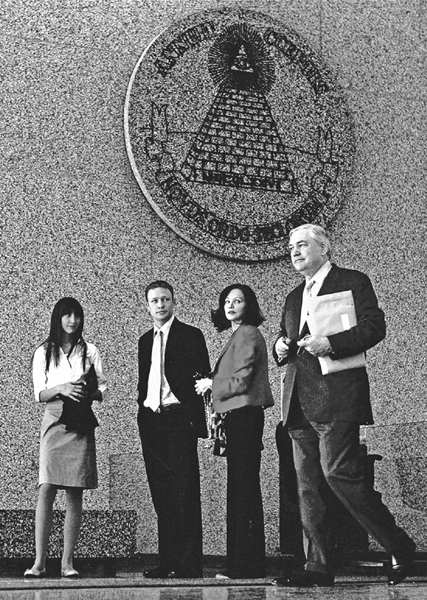
My daughter, Alana, and Barbara, who both attended almost every day of the trial, and my elder son, Jonathan, who came for several prolonged periods, as we enter the Chicago courthouse in mid-trial in the spring of 2007. Their solidarity, and that of my younger son, James, throughout all that is described here, has been inexpressibly gratifying. No one could have asked or received more from his family. (photo credit 2.12)